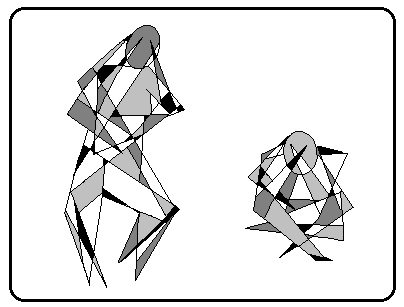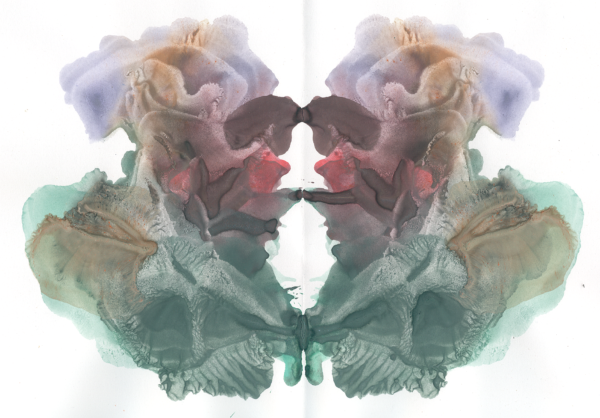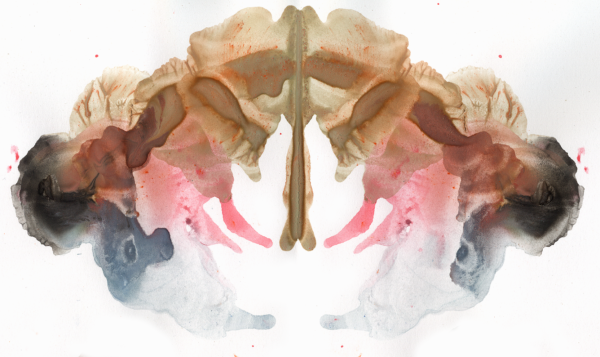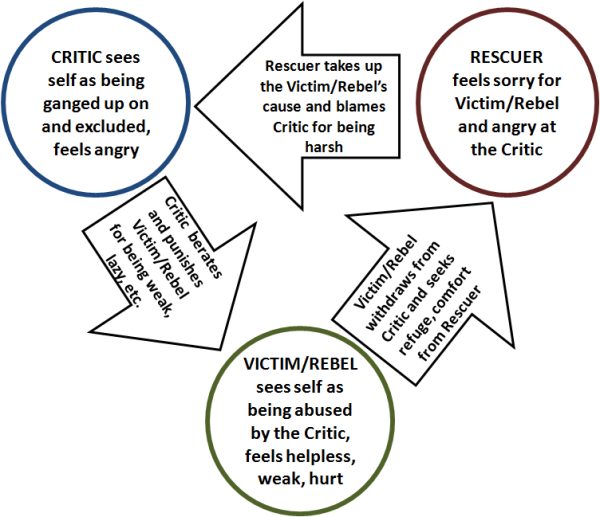We are all familiar with the Golden Rule, “Do unto others as you would have them do unto you.” Variations of this guideline appear throughout various cultures and religious traditions. Most of us probably endorse it, whether we follow it or not. Yet this adage focuses only on how we treat others. How we treat ourselves, though, is also worthy of attention. We shall consider two variants which mirror and complement the standard Golden Rule. The first proclaims, “Do unto ourselves as we would do unto others.” The other version advises, “Allow others to do for us as we would do for them.” Then, we will address the roles of experience and action – being compassionate and doing generous acts – in this endeavor. But first, we need to consider the focus and assumptions of these sayings.
Golden Rule Variants for Self-care
All three versions presented here address our treatment of ourselves and others. Of course, this advice would hardly be necessary if we all demonstrated abundant caring and generosity. Similarly, these sayings would be virtually meaningless if we already showed similar concern for all involved, ourselves included. However, by encouraging us to treat ourselves and others comparably, these adages all assume a disparity in caring. Whereas the Golden Rule encourages us to treat others better, our two variants urge better self-care. And while the standard adage relates to self-absorbed individuals, our two variants apply to those who habitually put others first.
Selfish and Selfless
Thus, the traditional Golden Rule and our two variants address two contrasting groups. Together, they represent polar opposites along a continuum ranging from selfish to selfless. Generally, we judge the former critically while praising the latter. Most of us recognize the shortcomings of being self-centered, with its tendency to alienate others. (I explore this orientation in more detail in my post, Narcissists’ Self-Promotions Trump Cooperation.) In contrast, we tend to disregard the downside for the selfless givers, who consistently put others first.
Being Generous to a Fault
Unbridled generosity often has adverse consequences for the giver. When we are constantly giving, without replenishing our emotional supplies, we become depleted. Our recipients come to take us for granted, such that they show little appreciation. We might then become resentful, which only builds over time. That sabotages our spirit of generosity, which we have been cultivating through our self-sacrifice. (I address these drawbacks in my post, Caretaker Burnout and Compassion Fatigue.)
Fostering Entitlement
Our pervasive giving frequently has dire consequences for the receiver, as well. With the support of their benefactors never in question, the recipients often take it for granted. This feeds into their sense of privilege, which cultivates unrealistic expectations of others. As such, they feel more deserving, such that they disregard others’ wants and needs. In fact, the term “afluenza” has been coined and used to describe the unhealthy entitlement of teens spoiled by their doting parents.
“Killing with Kindness”
In some instances, excessive generosity can foster dependency, rather than or in addition to entitlement. This is especially true when givers offer services which their recipients can provide for themselves, though not without some effort. These donors further “enable” dependency by implicitly defining their recipients as incapable of fending for themselves. Particularly when coupled with critics’ harsh judgment, the enablers’ good intentions transform their recipients into victims of low expectations. While not literally killing their charges with kindness, they often deaden their spirit. (I delve into this topic further in my post, Escaping the Victim Role.)
Thus, the recipients’ feeling bad about needing help often mirrors the givers’ feeling good about providing the needing support. After all, who wants to be considered a charity case? Yet committed caretakers often overlook this connection, as their core identity is so tied into being helpful to others. Without it, they can feel disoriented and lost, without a sense of purpose.
Striking a Balance between Polar Opposites
The Golden Rule and our two variants all propose solutions to our self-care and concern for others being out-of-balance. Selfish people need to treat others better, while selfless ones need to take better care of themselves. When taken together, the Golden Rule and our two variants suggest a balance between these two extremes. This is but one instance in which choosing a middle path works out better than operating at either opposing pole. (In Muddling down a Middle Path, I note various other polarities for which this advice applies. These include freedom vs. order, security vs. adventure, and belonging vs. individuality.)
The Two Inverse Variants of the Golden Rule
With all the preceding concerns, it may seem like I’m saying that generosity is bad. That’s certainly not my intent. Rather, I am asserting that an excessive commitment to serving others can be bad for all involved. Furthermore, I am affirming the helpfulness of balancing generosity with a healthy dose of self-interest. Now, we can consider how our two inverse variants of the Golden Rule address this imbalance. While one version explores how we treat ourselves, the other focuses on how we encourage others to treat us.
“Do unto Ourselves as We Do unto Others”
Perhaps we best demonstrate the meaning of treating ourselves as we treat others when we don’t follow this guideline. What does it mean when we take better care of others than we do of ourselves? Are we not implying that others are more deserving than us? Or that they are needier? If so, others may take us up on this attitude by expecting our support while disregarding our needs. Or are we suggesting that our service makes us better than others? Then others may resent our condescending attitude and perhaps feel bad about receiving our support. Whichever message we send – whether of being undeserving, less needy, or morally superior – it undermines healthy relations.
By contrast, treating ourselves as we treat others puts us on more even footing with them. We attain our identity and self-worth from both our advocacy for ourselves and our generosity toward others. On the one hand, we proclaim our self-worth through our self-assertion. On the other hand, we feel good about ourselves when we give to others. This balanced approach does not lay claim to any special treatment or entitlement. Taken together, these two sources of self-esteem support our being “just as good as,” but not necessarily “better than.” Furthermore, these ways of establishing our self-worth are less likely to convey a “holier than thou” attitude. Thus, it puts us more on par with others.
“Allow Others to Do for Us as We Would Do for Them”
Our second variant of the Golden Rule focuses on letting others help us. “Allow others to do for us as we would do for them.” Just as we feel good about ourselves for helping others, so can they feel good about themselves for helping us – yet only if we let them! Research studies have shown that generosity has a positive impact for the giver as well as for the receiver, and sometimes even more for the giver. So, do we really want to be selfish in hoarding those warm, fuzzy feelings for ourselves? Or are we willing to allow others those feel-good opportunities by accepting and appreciating their support?
Reluctance to Accepting Support
When such occasions arise, we may resist accepting support. We might be unwilling to giving up what we consider the moral high ground. (“’Tis nobler to give than to receive.”) Or we might balk at relinquishing the control of being in charge. Still yet, we might hesitate because receiving help implies that we are needy and therefore deficient. Whatever the cause, such staunch independence deprives others of the opportunity for feeling good about extending themselves.
Receiving Compliments
This hesitancy to receive support even extends to fielding compliments, which have very little cost for the giver. We have all witnessed occasions when someone receiving a compliment has minimized, qualified, or refuted it. Perhaps we can even recall instances when we have done so ourselves. While we might justify this response in the name of humility, we are also questioning our admirers’ judgment. Is that really how we want to reward someone’s graciousness? Just how hard would it be to show appreciation for their admiration?
Motivation Matters
Thus far, we’ve been focusing on the act of giving. We should recognize, though, that the intentions behind the support matter. We might offer support in response to social pressure, or to boost our reputation. Or we might give out of a sense of obligation. Recipients are less likely to respond favorably to these intentions than to giving out of caring. They might well feel beholding or obligated to us in return. Or they might even resent being used to bolster our status. Still yet, they may feel inadequate for needing help. In contrast, giving out of caring is more likely to engender gratitude. Motivation matters. Thus, effective charity involves being as well as doing – being compassionate while doing the giving. We might even propose yet another variant of the Golden Rule: “Be for others as we would be for ourselves.”
The Golden Rule Applied to Conflict
Thus far, discussion of the Golden Rule and its variants has focused on support, whether for others or for ourselves. But what if we are in conflict with others? We might well find ourselves disapproving of others, rather than accepting. Does the Golden Rule apply here? Well, it does state “do unto” others, not “do for” them. We’re probably not feeling so charitable in such cases – nor should we be. Offering acceptance or support implies condoning, if not actually enabling, those actions of which we disapprove. So how does the Golden Rule – and our variants of it, for that matter – apply in those cases?
Exercising Accountability
We all have the right to challenge others’ actions that affect us — as they do with us. For exercising accountability, a qualified version of “Love the sinner, hate the sin” appears in order. Our reservation centers on the blame involved in our labeling an action a “sin” and the doer a “sinner.” We should recognize that it is not our place to pass judgment. We can reduce this judgmentalism by regarding the offending action as a transgression against ourselves or others, rather than as a moral defect.
A general rule of thumb is to demand accountability for actions, rather than passing judgment on the person. Here, the distinction between doing and being comes into play. We challenge the doing of the action, while still showing respect for who the person is. Indeed, failure to call out the transgression conveys our low expectations for the transgressor. That hardly expresses respect. Thus, holding others accountable appears quite compatible with the standard Golden Rule – provided that we welcome constructive input ourselves. We address our readiness to receive challenging feedback in an upcoming section, “Being Called Out by Others.”
One particular insight helps us to cope with others’ transgressions against us. It is the realization that each transgression gives us the opportunity to advocate for ourselves, thus affirming our self-worth. Without such conflicts, we would have little need to take such action.
Calling Out Ourselves
Exercising accountability for ourselves involves taking stock of ourselves. This can be particularly problematic for those of us who are our own worst critics. My story of The Man with a Monkey on his Back dramatizes such struggles. And indeed, a “searching and fearless moral inventory” is often the most challenging of the Twelve Steps of Alcoholics Anonymous.) Here, the distinction between being and doing applies. Focusing on the kind of person we see ourselves being likely evokes shame. This feeling often immobilizes us, thus interfering with our efforts to change what we do.
Holding Ourselves Accountable for our Actions
Identifying how our “doings” transgress against others, or even against ourselves, however, likely causes guilt. This feeling calls our attention to our actions, which we can work at changing. Changing what we do is generally easier than changing who we are. With sufficient work at changing our behaviors, we might notice ourselves developing positive traits. And when we acquire enough healthy traits, we develop our character, or who we are. While this might be a “fake it till you make it” approach, it usually works better than an attempt at a “total makeover.” We might identify this variant of the Golden Rule as, “Hold ourselves accountable, as we would do with others.”
Being Called Out by Others
It would be great if we were able to recognize our transgressions toward others consistently. Unfortunately, that is often not the case, as we all have our “blind spots.” As a result, others often recognize our shortcomings before we do.” When they point these flaws out to us (or to others in our presence), we often experience shame and humiliation. This one-two punch usually involves our feeling judged, even if others are attempting constructive feedback. If this be the case, another variant of the Golden Rule applies: “Allow others to call us out, as we would want to call them out.”
Receiving Constructive Feedback
In accepting criticism from others, we recognize that they can help us with our personal growth – even if that’s not their intent. We also appreciate that our adversaries might more readily point out our shortcomings than would our friends. Furthermore, they are more likely to offer perspectives different than our own. Thus, we can often learn more about ourselves from our adversaries than from our allies. Again, this applies only if we listen! Of course, we may need to filter out their toxic judgment or blame to hear their constructive feedback.
Constructive Feedback, or Judgment and Blame?
How can we best respond to feedback, whether constructive or judgmental? I would suggest that we respond to each in the same way – with due consideration and gratitude. For input intended as helpful, this would obviously be an appropriate response. But what about for accusatory feedback? Yes, the same approach for that, as well. For one thing, we can learn valuable lessons, even if we don’t particularly care for how they are packaged. Furthermore, our adversaries would likely be unprepared for such a receptive response, thus catching them off-guard. Additionally, our not following their script for an “us versus them” confrontation can knock them off-balance. This often flushes out their agenda to shame and humiliate us. Thus, this strategy can prove effective for exposing and deflecting their verbal sneak attacks.
This approach warrants caution and skill, though. If we are too deferential, our adversaries might attempt to dominate us, particularly if there is an audience. In exercising due consideration, we can inquire into the assumptions behind their criticism. First, this exploration can help us to understand their outlook, such that we adapt valid aspects to our purposes. Second, this inquiry serves as a strategy for challenging their perspectives. Our questioning might just reveal some unwarranted assumptions or logical inconsistencies which they had not considered. And third, we can command respect through our discerning inquiry and poise. Even if they deny us their respect, they cannot take away our self-respect – that is, unless we let them.
Summary and Recommendations
Hopefully, our exploration of the Golden Rule and our proposed variants of it has expanded and deepened our understanding of fair treatment. In particular, we have noted how these concerns apply both to others and to ourselves. This is best achieved when our self-interest and our concern for others are fairly comparable. This balance both validates our self-worth and strengthens our emotional bonds with one another. Furthermore, the support works best when involving both experience and action – being compassionate and doing good works. This is equally true and relevant for our treatment of others and ourselves. When we alternate between the roles of giving and receiving, these guidelines help to foster greater understanding and cooperation.
I should note that I am not advocating a limit to the amount of compassion and generosity. Generally, more is better. In practice, though, judgmentalism is often the limiting factor: more judgment generally means less compassion. Instead, I am espousing that caring and giving be fairly evenly distributed between ourselves and others. When others claim more than their fair share, we should be ready to call them out. And by the same token, we should accept others calling us out. In this way, we can maintain our balance of self-interest and care for others. And when we all practice this balancing act and alternate between giving and receiving, we transcend independence and dependence. Instead, we foster healthy interdependence, and that works best for all.













